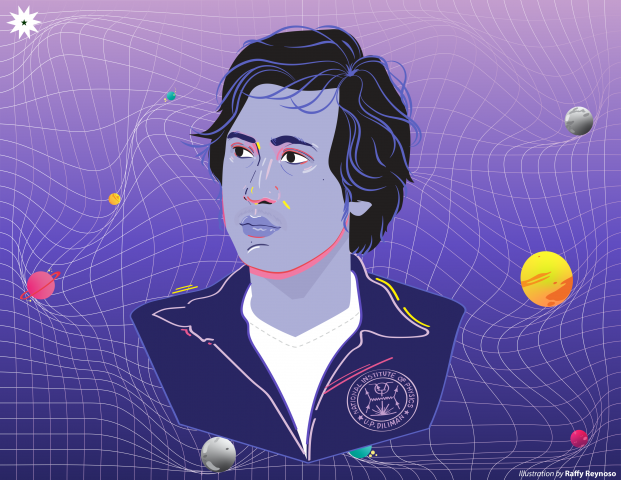To many, the word “gravity” conjures imagery of an apple falling from a tree, projectiles being shot into the air, or perhaps the tedious math equations of a Physics class. An omnipresent force of nature, gravity seems to exemplify the mundane—being itself an unchanging fixture of our day-to-day lives, now and always the 9.8 meters per second squared we were taught.
Digging a little deeper, however, would reveal that our current understanding of gravity breaks down at extreme scales, both large and small, prompting many physicists to search for alternatives that could either uphold or upheave our view of gravity as we know it.
One of these physicists is Dr. Reginald Bernardo, who, on May 22 via a Zoom teleconference, became the first person to earn a doctorate degree in Gravitational Physics in the Philippines.
An alumnus of the University of the Philippines Diliman, Bernardo tells The LaSallian about the experience, “It was confusing most of the time…but the most challenging part is extracting physical meaning [from] all the mess. It is very rewarding, though, when one gets past this and turns the experience into a [research] paper.”
An unexpected journey
The future can be uncertain; different influences and circumstances may alter one’s path. In Bernardo’s case, his path took a major turn when he gave up what he called his “hallucination to be a priest” in order to pursue Physics.
Shifting into the field in 2018, Bernardo reveals that “the biggest factor” for this transition was the availability of a supervisor with a doctorate degree—Dr. Ian Vega, an associate professor at the National Institute of Physics.
Bernardo also decided on Gravitational Physics as it was an “emerging and hopeful” discipline, dubbing the current period as the “golden age” for the said field. He further explains, “The optimism in the field is at an all-time high and this is expected to continue for years to come,” considering the 2015 discovery of gravitational waves by scientists at the Laser Interferometer Gravitational-Wave Observatory and the first-ever image of a black hole presented by the Event Horizon Telescope team in 2019.
Alternative theories of gravity
As a theorist, Bernardo’s research work delved into the nature of gravity in the Universe and utilized alternative theories of gravity to explore current cosmological problems such as the Universe’s accelerating expansion due to an unexplained and elusive energy known as dark energy.
Titled Compact Objects, Cosmologies, and Gravitational Perturbations in Scalar-Tensor Theories of Gravity, Bernardo’s doctorate dissertation presented a modified theory of gravity to explain the expansion without the need for dark energy—which he describes as energy that physicists “do not fundamentally understand.” He elaborates, “A bigger picture can be obtained by building on [Albert] Einstein’s [theory of] general relativity and using the broader framework of alternative theories of gravity.”
Under Bernardo’s modified theory, the concept of dark energy is replaced by what is known as a scalar field. Referred to as the “simplest theoretical device in Physics” by Bernardo, the scalar field is, in essence, a function that outputs a scalar value—that is, one without an element of direction.

The alternative theories Bernardo mentions are the scalar-tensor theories, wherein the scalar field is conjoined with a tensor field—a function that outputs a vector, or a quantity with direction and magnitude. General relativity remodeled gravity as the curvature of space-time—a tensor that involves both mass and energy—rather than Isaac Newton’s gravitational potential, a scalar concept wherein energy is excluded, he explains.
With these theories, Bernardo managed to incorporate solutions for cosmological problems that would “lock-in on a final theory of gravity”.
Physics in the Philippines
While Physics is still a far underappreciated field in the Philippines, there nevertheless exists a dedicated few who Bernardo says are competitive “by international standards”. He comments, however, that they carry a lot of responsibilities, and most are “even flooded with administrative and teaching duties, apart from [load from] mentoring and scientific research.”
Encouraging the youth to take up Physics, he states that there are many fields to choose from, citing Photonics, Nanotechnology, Gravitational Physics, among others. “Physics is a career,” he adds, revealing that he is set to take a postdoctoral position at South Korea’s Asia Pacific Center for Theoretical Physics to further his research. “It is something that you can enjoy talking about with your friends in and out of the scientific community.”
Bernardo touts that becoming a physicist to him is an “intellectual trophy”, musing that the emergence of great physicists always precedes scientific revolutions. “We should be proud of Filipinos taking up Physics,” chimes the scientist.
